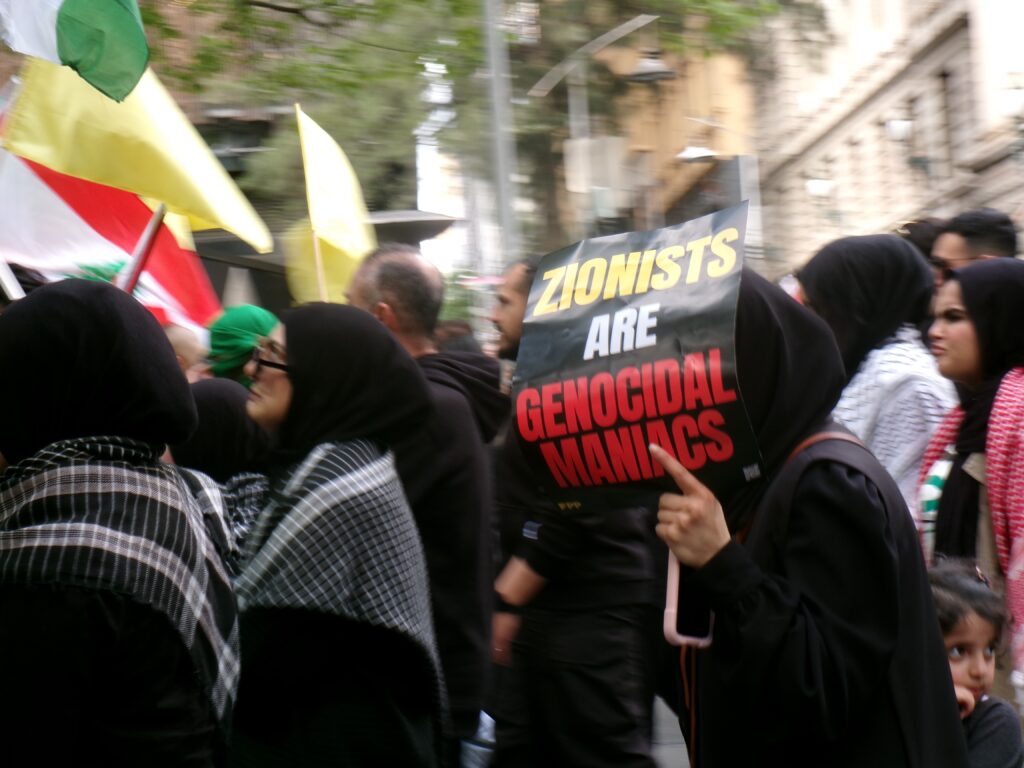IN THE MEDIA
Anti-abuse laws pose no real threat to freedom of speech
December 9, 2013 | Daniel Meyerowitz-Katz

Daniel Meyerowitz-Katz
The Australian – December 09, 2013
IT would be difficult to have missed the recent campaign in these pages and elsewhere against section 18C of the Racial Discrimination Act, which makes conduct unlawful where it is done because of someone’s race/ethnicity and is reasonably likely to “offend, insult, humiliate or intimidate” them.
For those who understand the operation of 18C, this campaign has been somewhat disheartening: 18C’s opponents have avoided making legitimate criticisms, instead relying on a number of half-truths and exaggerations to put their case forward.
For instance, they have cynically characterised 18C as the “Bolt law” – after the 2011 decision against columnist/commentator Andrew Bolt. This marginalises the 16 years of cases before Eatock v Bolt.
There was, for example, the case against Holocaust denier and anti-Jewish conspiracist Frederick Toben, brought by Jeremy Jones on behalf of the Executive Council of Australian Jewry. The decision went to Jones in 2000, as did the appeals in 2002 and 2003. Another of Jones’s suits prevented a woman in Tasmania from distributing material claiming that the Jewish religion promoted pedophilia and was destroying Christian societies through “race-mixing”.
Another inconvenient detail that the anti-18C campaign has resolutely ignored is section 18D. This contains a number of freedom of speech defences to 18C; exempting artistic works, conduct for any purpose in the public interest, or a fair comment on any matter in the public interest. Bolt was not exempted because Justice Bromberg found that his conduct had not been done “reasonably and in good faith,” but 18D has been employed successfully in several high-profile cases.
For example, there was the case brought in 2002 by Aboriginal-rights activist Robert Bropho against The West Australian newspaper, concerning a cartoon about the repatriation of the head of West Australian Aboriginal leader Yagan from a London museum. The cartoon depicted the event as a junket to England for Aboriginal elders. It was found to breach 18C, but was also found to be exempt under 18D as an “artistic work” for the “genuine purpose in the public interest” of encouraging “public discussion or debate about the return of Yagan’s head”.
Another misrepresentation of 18C is that it is some kind of serious criminal offence. In reality, 18C does not even create a civil offence. There are no fines and no jail time for breaches, and most successful cases – of the ones which even make it to court – end with no more than a “cease and desist” order. Before going to court, 18C complaints have to go through conciliation at the Australian Human Rights Commission, where the vast majority are either dismissed for lack of merit or resolved. To put things in perspective, of the 192 complaints to the AHRC last year under 18C, six proceedings were filed in court.
Which leads me to perhaps the most common argument against 18C: that because it supposedly punishes conduct for causing “offence” – for mere “hurt feelings” – it is a serious threat to free speech. This argument shows ignorance both of the operation of 18C and of Australian law more broadly. For one thing, the word “offend” has been narrowed by courts to refer only to “profound and serious effects, not … mere slights.” Secondly, 18C is far from the only law against causing offence in certain circumstances.
When 18C was written, the words “offend, humiliate or intimidate” were lifted from the federal sexual harassment laws. Similarly, state sexual harassment laws criminalise conduct performed in front of someone, without their permission, which is “offensive to sexual modesty”. Meanwhile, common law breach of the peace laws have banned publicly engaging in conduct “calculated to wound the feelings” for centuries, and their modern incarnation in NSW makes it an offence to conduct yourself “in an offensive manner” or to “use offensive language in or near … a public place”.
Unlike 18C, those laws do criminalise causing offence – and carry heavy fines and prison terms.
Most importantly, 18C does not make it unlawful to merely say something that might be construed as racist and hurt someone’s feelings. What is unlawful is doing something “because of” the race/ethnicity of a person that is reasonably likely to offend them. The issue is not that anyone’s feelings are hurt; it’s that someone is targeted for harassment because they happen to be of a certain ethnicity.
For example, the Toowoomba Athletic Oval was sued in 2001 for naming a stand after local rugby league hero ES “Nigger” Brown. This did not breach 18C as the stand had not been named that way because of anyone’s race – Brown was of Anglo descent and nobody could remember how he had earned the nickname.
If people genuinely think it should be legal for Australians to harass others on the basis of race, then they are welcome to make that argument. What’s troubling about the anti-18C campaign is its dishonesty.
The provision is made out to be an offence when it is not. The freedom of speech defences are ignored. It is purported to be a unique law against causing offence, when it is actually modelled on centuries-old breach of the peace laws. One controversial decision is focused on to the exclusion of almost 20 years of positive outcomes.
But then, being honest about 18C makes it harder to spin the provision as a threat to free speech, and nobody wants to openly defend racial harassment. Do they?
Daniel Meyerowitz-Katz is a Policy Analyst at the Australia/Israel & Jewish Affairs Council.
Tags: Australasia





